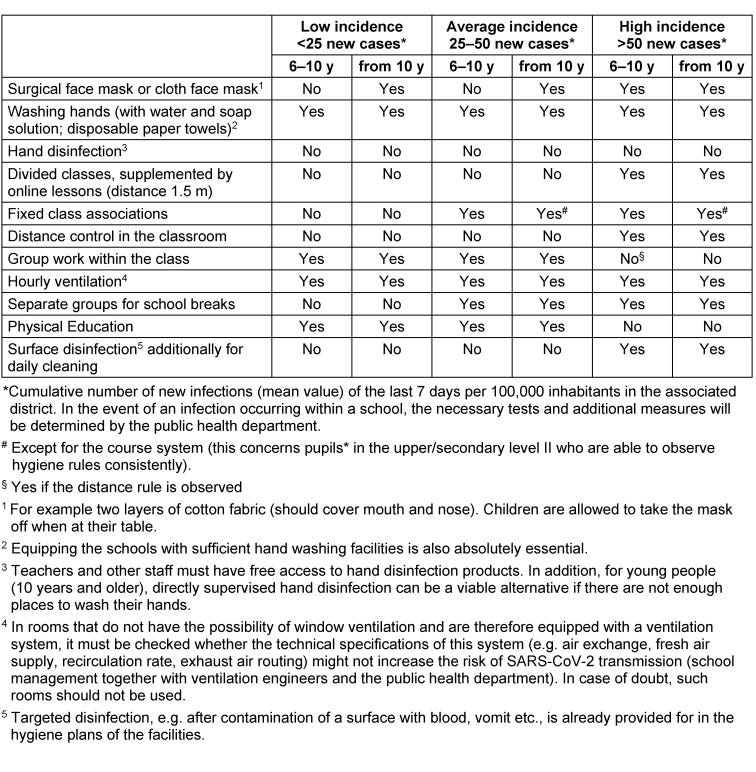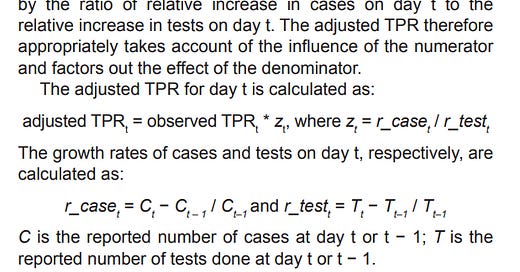10/3—Monitoring COVID-19 where capacity for testing is limited
In an effort to monitor COVID-19, many countries have been calculating the ratio of cases confirmed to tests performed (test positivity ratio – TPR). While inferior to sentinel surveillance, TPR has the benefit of being easily calculated using readily available data; however, interpreting TPR and its trends can be complex because both the numerator and the denominator are constantly changing. We describe a three-step process where the ratio of relative increase in cases to relative increase in tests is accounted for in an adjusted TPR (Vong and Kakkar, 2020).

Performance characteristics of five immunoassays for SARS-CoV-2: a head-to-head benchmark comparison
At the manufacturers' thresholds, for the Abbott assay sensitivity was 92·7% (95% CI 90·2–94·8) and specificity was 99·9% (99·4–100%); for the DiaSorin assay sensitivity was 95·0% (92·8–96·7) and specificity was 98·7% (97·7–99·3); for the Oxford immunoassay sensitivity was 99·1% (97·8–99·7) and specificity was 99·0% (98·1–99·5); for the Roche assay sensitivity was 97·2% (95·4–98·4) and specificity was 99·8% (99·3–100); and for the Siemens assay sensitivity was 98·1% (96·6–99·1) and specificity was 99·9% (99·4–100%). All assays achieved a sensitivity of at least 98% with thresholds optimised to achieve a specificity of at least 98% on samples taken 30 days or more post symptom onset.
Use of surveillance technology to enhance exposure management for healthcare workers during the COVID-19 pandemic
In February 2020, a junior physician, deployed to the screening centre for nine days, was diagnosed with pneumonia and admitted for suspected COVID-19 infection. She reported no epidemiological links to known cases, and was unaware if any patients she had attended to were confirmed to have COVID-19. In addition to interviewing the physician, we extracted data captured through her real-time location systems tag to objectively determine her contacts over her working duration in the screening centre. This contact list was cross-checked against the master list of confirmed COVID-19 patients admitted to our institution. These processes were completed in a few minutes, using tools in Microsoft Excel (2013). We determined that six days earlier, she had been within two metres of a subsequently confirmed COVID-19 patient, for nine minutes. A review of the COVID-19 patient’s electronic medical record confirmed this encounter. Real-time location systems enables more effective contact tracing of hospital contacts compared to traditional electronic medical record-based methods.
COVID-19 Surveillance in Youth Soccer During Small Group Training: A Safe Return to Sports Activity
Seattle United has a total of 1906 players registered, with teams practicing 1 to 3 times per week for approximately 40 to 60 minutes each practice. Between June 29, 2020, and August 9, 2020, there were a total of 15,494 players that attended practice. Only 2 players tested positive for COVID-19 during the study period, both acquiring the infection from outside of Seattle United soccer activities. One player who tested positive developed symptoms of COVID-19 hours after an evening practice. Four players from that practice pod were briefly quarantined and all tested negative. Six additional players that had engaged in soccer activity with the infected player outside of Seattle United practice were also briefly quarantined and all tested negative. The second player who tested positive had been quarantined before symptoms arose and did not attend a Seattle United practice while potentially infectious. Small group youth soccer training, when appropriately physically distanced, is safe and does not promote or accelerate spread of COVID-19 because of sports activities.
Measures to maintain regular operations and prevent outbreaks of SARS-CoV-2 in childcare facilities or schools under pandemic conditions and co-circulation of other respiratory pathogens
Before the complete closure of an institution, the escalation of preventive measures (see Table 1) is an essential prerequisite for maintaining unrestricted or partially restricted regular operation.

Get it by email:
Missed an update? View past issues.

